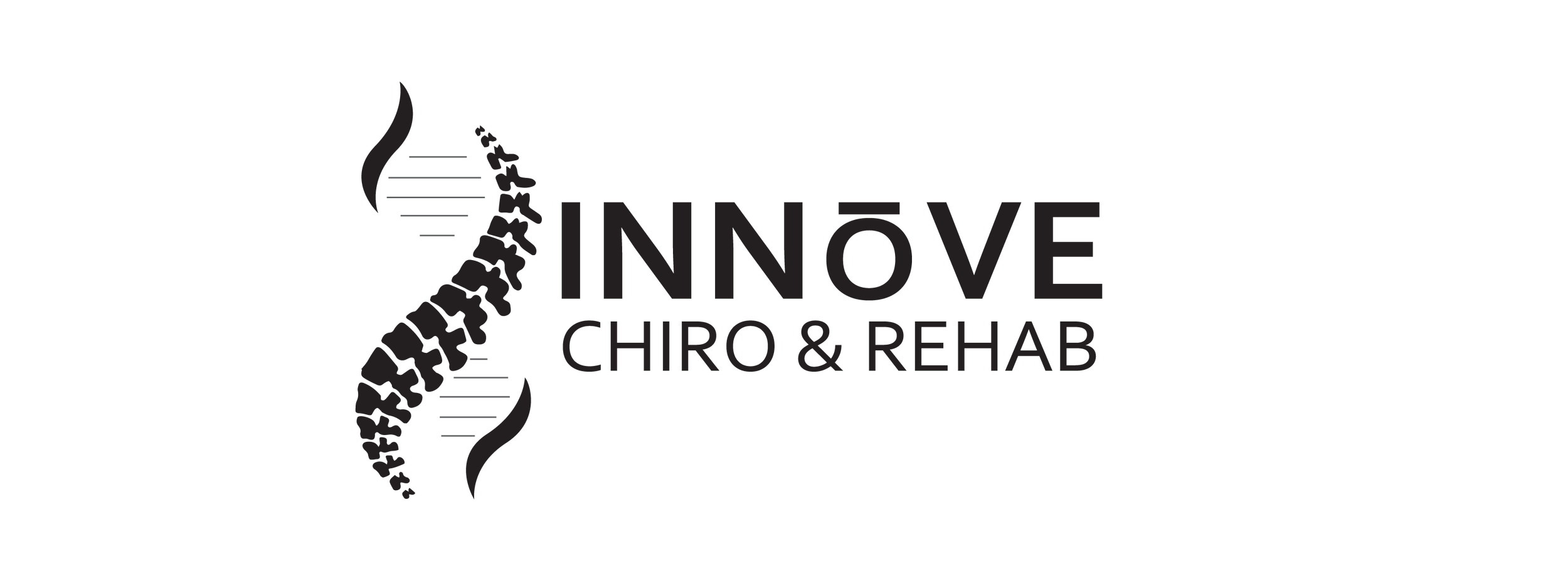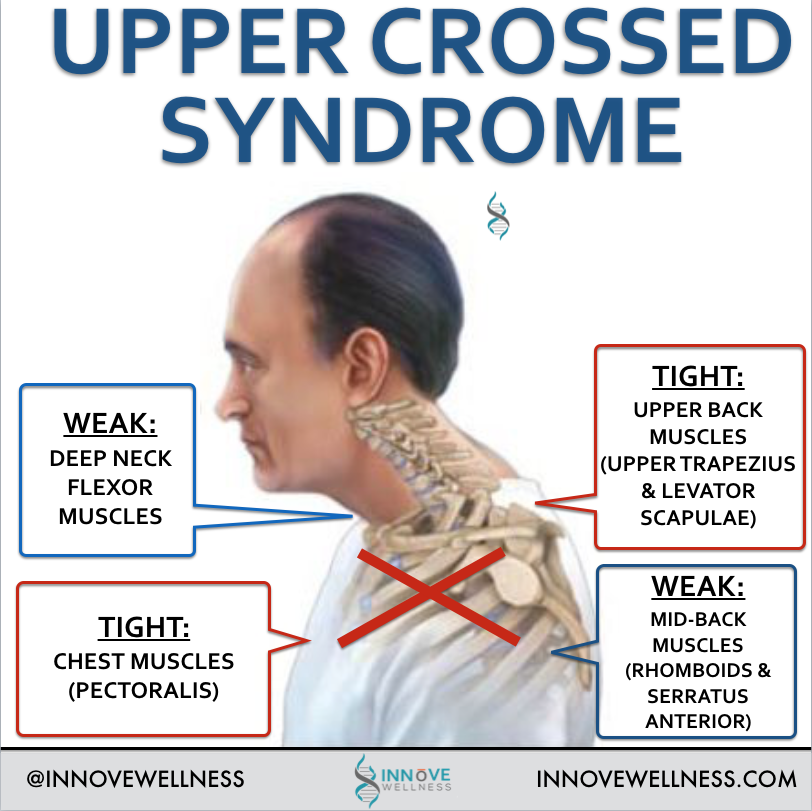Upper Crossed Syndrome
Due to the hours spent looking down at mobile devices, hunching our backs while using the computer, and lack of exercise, many Americans have extremely poor posture. The constant improper loading of joints in our spine and tension in the surrounding muscles often lead to the common postural syndrome characterized by a head that leans forward, rounded shoulders, and hunched-over upper back. You may have heard of this phenomenon referred to as "text-neck", but the proper term is Upper Crossed Syndrome.
What is Upper Crossed Syndrome?
Upper crossed syndrome and extremely common postural dysfunction seen in many Americans. It is commonly caused by having slouched sitting posture over a long period of time. By slouching, rounding the shoulders, and looking down, this causes many important muscles to become weak while others become tight and over-contracted. This muscular imbalance eventually causes a permanent slouching posture.
The muscles that become weak are those responsible for holding the body upright by pulling the shoulders back and holding the head up. These weak muscles are those on the front side of the neck and the mid-back: The deep neck flexors, rhomboids (mid-back), and serratus anterior (mid-back around ribs).
The muscles that become tight and over-contracted affect posture by pulling the shoulders forward and up. These muscles are located in the chest and upper back area and are responsible for the rounded shoulders and hunched posture that is seen with upper crossed syndrome. The tight and over-contracted muscles are the pectorals major (chest), upper trapezius (upper back/back of neck), and levator scapulae (upper back).
The Effects of Upper Crossed Syndrome:
The poor posture seen with upper crossed syndrome can lead to muscle pain, tension in the neck and shoulders, headache, poor biomechanics (how the body moves), and increased chance of further injury. The symptoms of Upper Crossed syndrome and poor posture are usually felt away from the primary site of dysfunction (in this case the upper torso and neck) because this posture can negatively affect the mechanics and mobility of the entire body which can lead to pain in another region.
Treatment of Upper Crossed Syndrome and Poor Posture:
The treatment of Upper Crossed Syndrome is fairly simple but requires some commitment in order to improve. The goal of treatment is to strengthen the muscles that have become weak while increasing flexibility and removing muscle spasm in those that are tight/over-contracted.
Exercises to strengthen the weak and inhibited muscles are extremely important to restoring normal posture and biomechanics. These exercises are aimed to improve muscle tone in the back and neck while pulling your posture into a more upright position. The strengthening exercises are fairly simple and should be performed multiple times per week.

